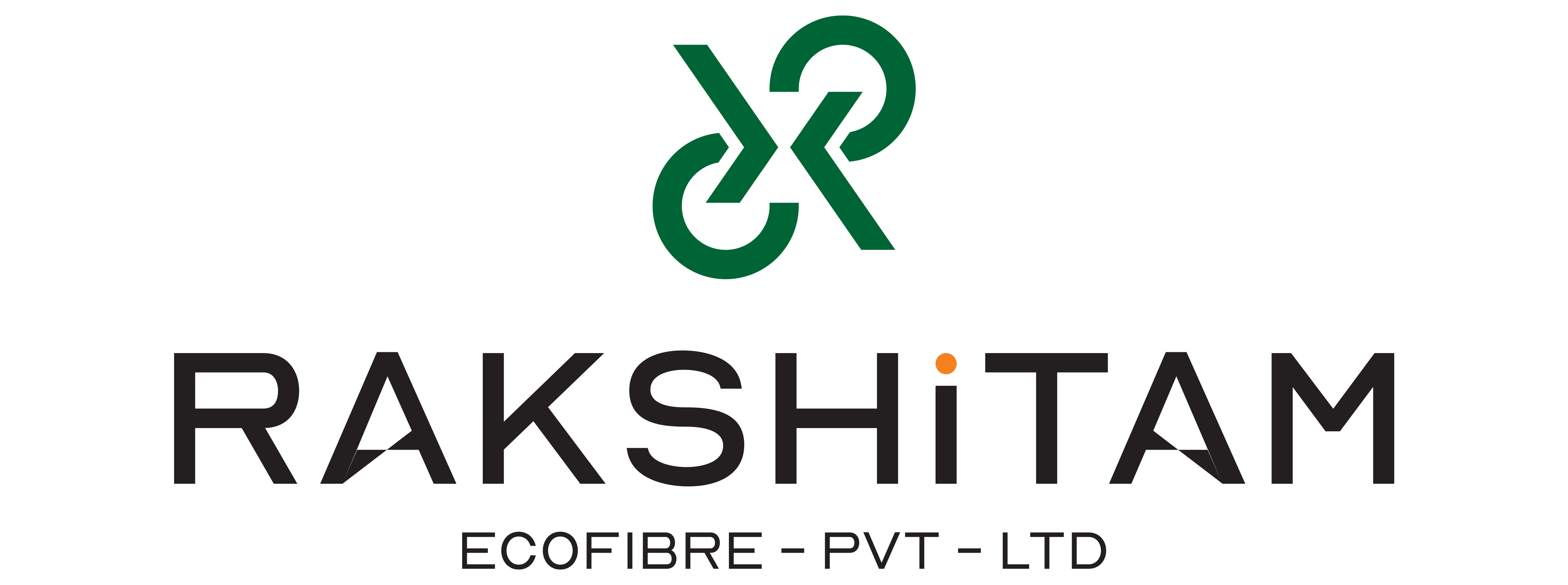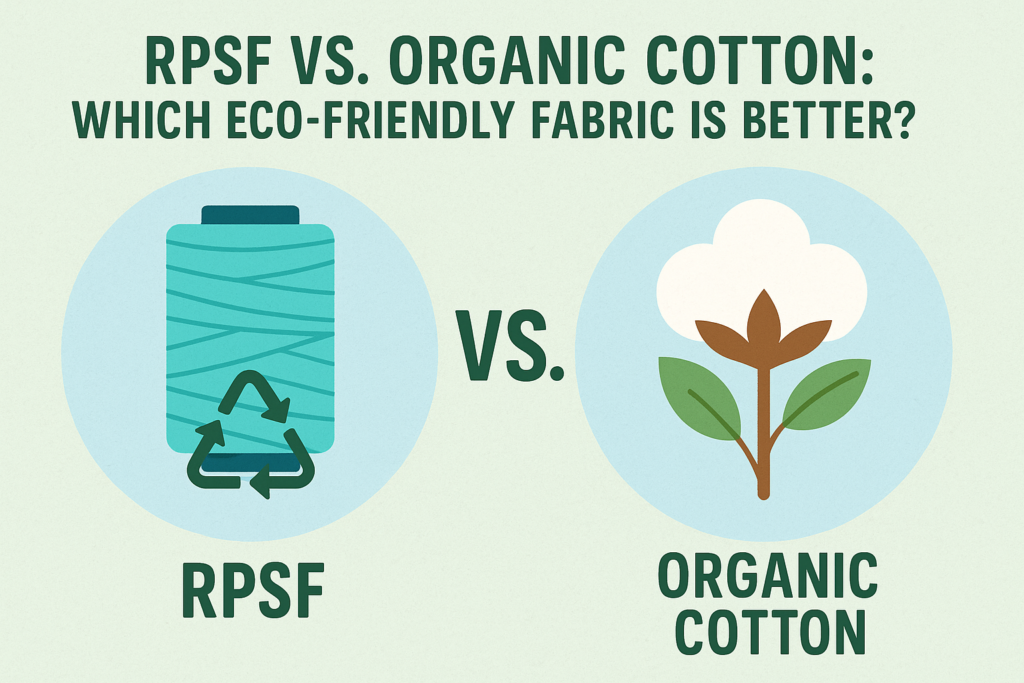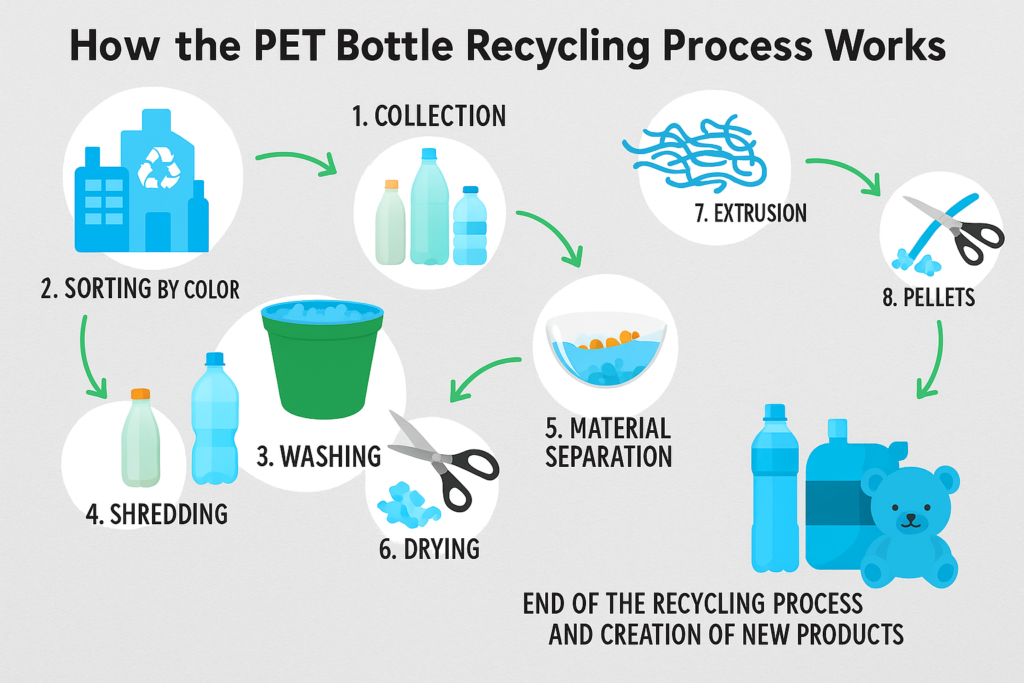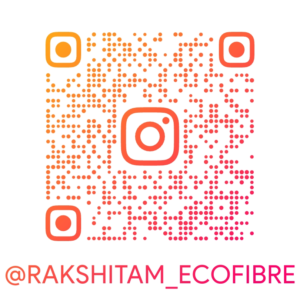While the management of plastic waste has grown into a challenge for many, the PET bottle recycling process offers one of many innovative solutions to take a step towards a cleaner and more sustainable future. As a common beverage container, PET bottles have a value that increases when recycled, as they can serve as a raw material for many industries. In this guide, we will illustrate the process of PET bottle recycling, discuss its several environmental advantages, and outline its importance in the circular economy.
What Is PET and Why Recycle It?
PET stands for Polyethylene Terephthalate, which is a clear and lightweight plastic commonly used in food and drink packaging. Its advantages include being 100% recyclable, as it can always be transformed into new bottles, clothing fibers (rPET or Recycled Polyester), and packaging. Recycling PET also saves natural resources, reduces waste in landfills, and maintains the emission of greenhouse gases.
Key Benefits of Recycling PET Bottles:
- Helps reduce the amount of plastic pollution that fills landfills
- Saves energy in comparison to production from virgin plastic
- Opens new doors of economic opportunities through various recycling industries
- Supports a circular economy by keeping materials in operation
A Walkthrough of the PET Bottle Recycling Procedure
1. Collection and Transportation
The recycling journey begins with the collection. PET bottles are obtained from commercial waste streams, municipal recycling programs, and even informal collection networks. After collection, the bottles are transported to recycling facilities for further work to be done on them.
2. Sorting
At the recycling plant, bottles undergo sorting of their resin code, color, and type. Automation and manual selection are used to separate PET bottles from miscellaneous plastics. Removing contaminants during this stage of the process guarantees better quality recycled plastic after the process is fully completed.
3. Cleaning and Pre-Washing
Labeled, dirtied, or food residue containing PET bottles undergo pre washing to make them cleaner. To guarantee that the end product meets the required standard of cleanliness, labels, adhesives, dirt, and food remnants need to be removed.
4. Grinding into Flakes
Industrial grinders are responsible for shredding cleaned PET bottles into small bits. These bits of plastic are referred to as flakes and serve as the basis for premiering a majority of recycled products. Flakes are also easier to process during later stages.
5. Hot Washing and Decontamination
The flakes undergo hot washing which includes the use of water and cosmetics deftly associated with the removal of adhesives, oils, and other contaminants. This step ensures the flakes meet food-grade or industrial-grade standards.
6. Drying and Quality Check
The flakes are dried using a high temperature drying system after the washing process. A quality check ensures that no contaminants, and that color and size conform to bounds within defined limits for each quality grade. Only those flakes passing the required criteria are taken forward for further processing.
7. Extrusion and Pelletizing (Optional)
In some cases, clean PET flakes are further subjected to melting and extrusion, forming the material into pellets. These can then be utilized for producing a variety of new goods including bottles, packaging materials, textiles, and other products.
Uses of Recycled PET (rPET)
Recycled PET is found in a diverse range of products which include the following:
- New containers and PET bottles
- Fibers for textiles, carpets, and upholstery
- Electronics casings and automotive parts
- Strapping, and food trays and sheets
With the rise in recycled material usage (rPET) all over the world, It is well known for being cost effective and supporting sustainability.
Economic and Environmental Consequences
The benefits of recycling PET materials include decreased fossil fuel consumption, reduced plastic waste in landfills, and oceans, and decreased greenhouse gas emissions. Moreover, it creates new jobs and economic value in the context of managing waste and manufacturing.
Also Read: What Are rPET White Flakes? A Complete Guide to Their Uses & Benefits
Final Notes
Recycling PET bottles is important for sustainability all over the world, and it goes beyond just a mere procedure. Knowing the precise details aids consumers and business’s to understand three value chains from PET bottles. Each bottle that is recycled contributes to a circular economy and a greener planet.
Do you identify as a brand, recycler, or manufacturer? Consider eco-friendly business investments in the form of rPET materials. This will socially polish your business as well as reduce your carbon footprint.
